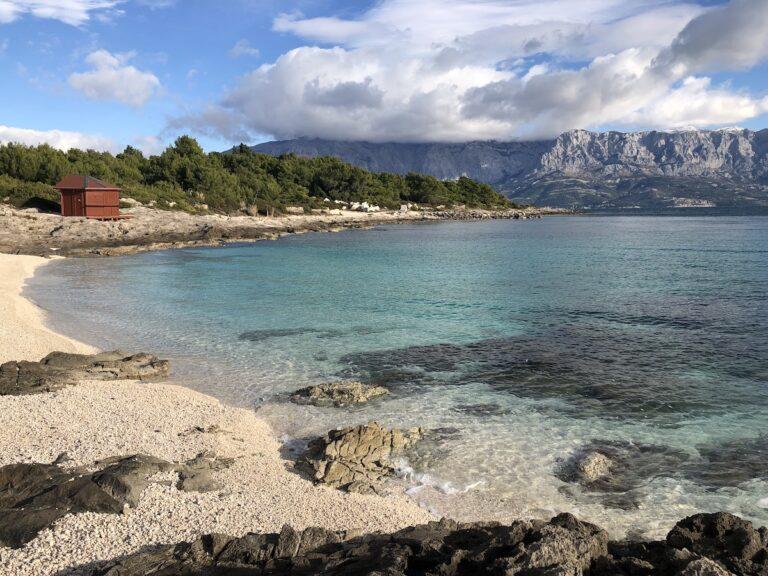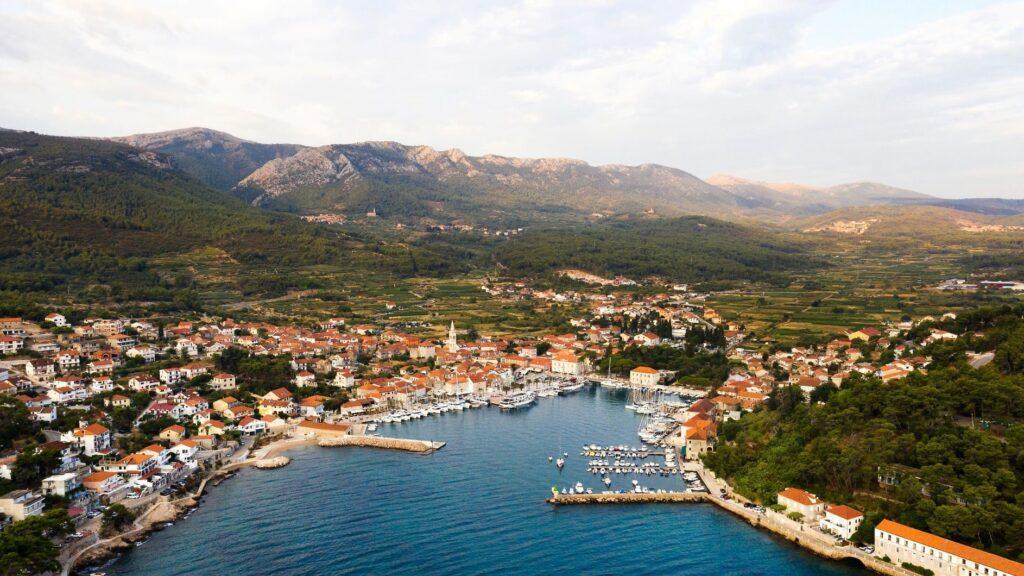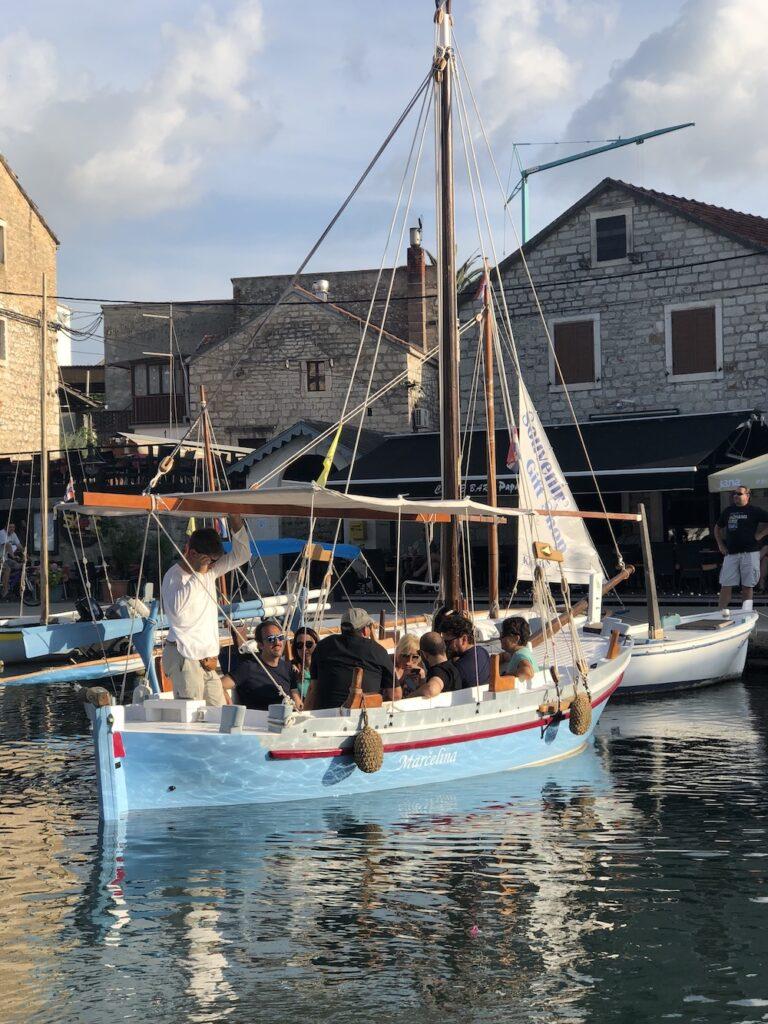Brač and Hvar, Croatia
UNESCO emblematic community of the Mediterranean Diet.
Brač and Hvar are two islands of central Dalmatia and constitute the emblematic communities of the Mediterranean Diet of Croatia.
Brac is the largest of the islands, has an area of about 395 km2, with a population of 13,000 inhabitants, while Hvar covers almost 300 km2, with about 12,000 inhabitants. Thanks to their healthy lifestyle and balanced diet, the islands of Brac and Hvar became part of the UNESCO list of emblematic communities of the Mediterranean diet in 2013.
The Island of Brač
Brač is the largest island in Central Dalmatia with Vidova gora as its highest peak, but also the highest peak on all Adriatic islands. Many would say that Brač is a continent and a continent within an island because it connects diverse landscapes into a whole. It merges the gentleness of the coastal part and the rugged hilly inland.
Brač is an island with an ancient history, and its landscape bears the imprint and the testimony of the ancient connection with the mainland through which the river flowed.
The island is known for its Mediterranean climate, mild and rainy winters and long and dry summers. It is one of the sunniest Croatian regions. The landscape of Brač has inspired many Croatian poets painters and photographers who feel the connection with the island through their ancestors.

Rich layers of limestone enabled the development of stonemasonry. There are many buildings throughout Europe that were built using the Brač stone, including Diocletian’s Palace in Split. The stone has been the basic construction element in the island architecture, both on the coast and inland. It was equally used for building of outbuildings and sacral objects.
Brač was inhabited in prehistory and there are evidence confirming the presence of Illyrians and Romans in this area. However, there is no firm evidence that Greeks inhabited the island, and it can only be presumed, e.g. through the legend about the name of the island, through a drink made from a mixture of goat’s milk and red wine (bikla, smutica, buranica), and through the dish called vitalac (grilled lamb entrails wrapped in caul) that can be found on the Greek islands of Rhodes and Crete.
Croats came to the island only in the seventh century, and we find many testimonies about that in the rich history of Brač. On of the most interesting places on the island of Brač is definitely Blaca Hermitage, a monastery built by Glagolitic hermit monks that fled from Ottoman attacks in the 15th century and a valuable monument of culture.
From the 15th to the 18th century, Brač was ruled by the Venetians, which was also reflected in the local cuisine. It is an equal blend of the monastic and aristocratic cuisine interconnected with influences from the faraway overseas countries that seafarers brought to the island. However, the most distinctive cuisine that emphasizes the duality of the landscape is the cuisine of fishermen and farmers. It reflects the dichotomy of living on the island Brač, and is based on cattle breeding (goat and sheep breeding), fishery as well as vine and olive growing.

However, the climate and poverty of the karst area have partially limited the diversity of raw materials that can be found on Brač. Therefore, wild herbs and hone have been extensively used in the cuisine and the traditional medicine of the indigenous people of Brač for a long time (the document titled Brač Statute from the 13th century provides evidence of beekeeping as a developed economic branch).
The legumes such as broad beans, peas, chickpeas and beans played an important role in the cuisine of the island of Brač, especially in winter time (the evidence of this is a dish called bara that is eaten in December, on the feast day of St. Barbara; there is a similar dish in Italy and on the neighbouring island of Hvar). Dairy products from goats and sheep milk were also an important element of the diet (the evidence of this is a dish called procip – young cheese sprinkled with sugar and baked).
Grapes were not only used for production of wine and smutica, they are still used for production of prosecco. It is a drink made from grapes dried on vines. The older and longer the grapes are left on vines, the more appreciated and sweeter the drink will be. It would usually be opened at the birth of a child. Grapes were also used to make varenik, a drink produced by boiling the must. It is also used as an supplement to dishes such as pasticada, brodetto and for a long-lasting sweet called čupter.
The awareness of the importance of food, its history and effect on lives of the inhabitants of Brač is reflected in numerous festivals dedicated to food and the fact that two dishes have been inscribed on the List of Protected Intangible Cultural Heritage of Croatia: dolska torta hrapoćuša and vitalac.
The Island of Hvar

Although Hvar was inhabited 6,000 years ago, it only entered the written history records with the last wave of Greek colonization in the fourth century BC.
In 384 BC, colonizers from the island of Paros in the Aegean Sea founded the city-state (polis) of Faros. It was situated a deep bay, close to the largest fertile field of all the Adriatic islands. They expelled the indigenous Illyrian population and divided the field into a network of equal plots measuring 180×900 meters.
Besides the wheat that was grown even in Antiquity, vines and olives are still the main agricultural crops grown in Starogradsko polje, in the centre of which is a water well. The millennial continuity of life inscribes the unique culture and destiny of the island even through the agricultural land concepts, from Faroska hora (Xορα Φαρου), through the Agera Pharenis and the Field of St. Stephen (Campus Sancti Stephani) to the UNESCO site of Starogradsko polje.
The Statute of the Hvar Community (Statut hvarske komune) from 1331 provides the picture of the late medieval life on the island. We learn here that the island’s prosperity is based on viticulture, winemaking, growing figs and carob, fishing and production of salted small fatty fish. The island owes it economic and cultural prosperity equally to safe harbors as well as skilled sailors and merchants.

The extent of the island’s prosperity hides in the fact that the island of Hvar is one of the centers of the Croatian Renaissance literature. The proof of strength of the humanistic thought and the Renaissance spirit are not only evident in the works of writers such as Marin Benetović, Mikša Pelegrinović or Hanibal Lucić, but also in the architecture of summerhouses and fortifications such as Tvrdalj built by Petar Hektorović in the Old Town.
The turbulent sixteenth century left important material and immaterial traces caused primarily by the events such as the Hvar People’s Uprising that took place from 1510 to 1514., the invasion of Ottoman Empire in 1539 and 1571. The imprint of these turbulent times also reflects in the legend about a miracle tears that appeared on a Hvar cross before the uprising. It is considered to be the beginning of the traditional Following the Cross Procession (za križem).
Stari Grad and Hvar became rich maritime towns in the 17th and 18th century. However, just a century later they shared the destiny of a sailing ships that slowly left the stage of history.
Starting from the late 19th century, the production of lavender oil and pyrethrum pollen, which is a natural, but almost forgotten pesticide, joined viticulture and fishery, with the accompanying processing of fish by canning and salting (the exceptional expertise of Stari Grad fishermen is best illustrated by the fact that, for almost fifty years, the island of Lampedusa organized a permanent summer camp where the island population were taught fishing and canning sardines) as important economic activities. It was in the time before the mass tourism that started in the 1960s, that lavender and Dalmatian pyrethrum (Chrysanthemum cinerariifolium) secured the survival of the local population that was strongly affected by the devastating effects of downy mildew from the end of the nineteenth century.
The dietary image of the island of Hvar is an un-unrevelable web of influences of different cultures and historical eras, culinary habits of the wealthy aristocracy and later bourgeoisie, as well as simple dishes of the rural and fishermen population. The daily cuisine is simple and seasonal with pretty routine distribution of meals. The Dalmatian cuisine, i.e. the Croatian version of the Mediterranean cuisine is typical for at least two cooked meals a day, usually lunch and dinner.

In addition to family meals, it is necessary to mention the brunch (marenda), a meal that serves to make a short break in the working day and is quite often shared with colleagues or friends.
The daily diet, which traditionally comprises a lot of legumes (peas, broad beans, chickpeas and beans), freshly boiled (na lešo) vegetables and wild herbs spiced with olive oil and fish, is occasionally replaced by festive and regular meat menus on Sundays, holidays and public holidays.
The convivial character of meals is particularly emphasized by customs such as crucifixion feasts associated with the za križem procession or kanota – a feast that is held after the completion of an important job such as grape and olive harvest, or more recently at the end of the restaurant season.
The typical meals of the Hvar cuisine include dishes such as gregada (white fish soup with potatoes), artichokes with broad beans or peas, varica (stew of beans and cereals prepared for the feast of St. Barbara), ventrom (a thick soup dish made of lamb entrails and blood), panada (dry bread soaked in soup or water with olive oil), starograjski paprenjok (Renaissance cake made of honey, flour, olive oil and prosecco, spiced with cinnamon, cloves, nutmeg and saffron) or cvit (a crispy biscuit whose two ingredients are still bought in local pharmacies). It is a culinary curiosity that dormice are eaten only in the village of Dol on the island of Hvar and in the village of Dol on the island of Brač.
The Mediterranean Diet encourages a holistic approach to food, favoring balance and frugality anchored in local agricultural products and the seasonality of food patterns.
